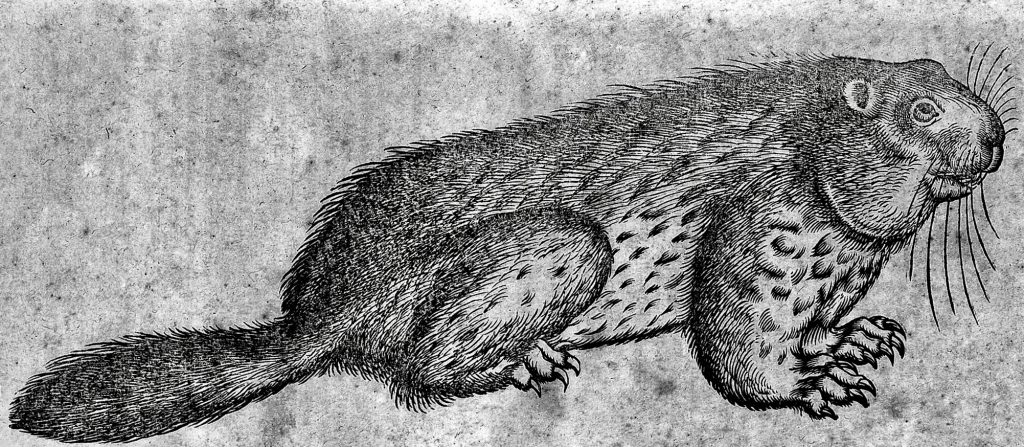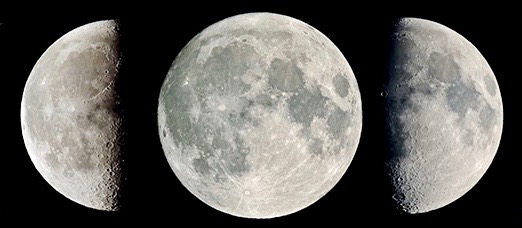I. Scylla & Charybdis
It behoves the translator of the Philosophical Marmot (apud Eugène Rambert) to guard a respectful distance from the Scylla of excessive Gallicism, on the one hand, and the Charybdis of reductive Anglicism, on the other. The Tablets display many registers – from the homely to the elevated; if the English, on occasion, departs from Mr. H. W. Fowler’s ‘modern usage’, it is because the best translation for “Je fais aujourd’hui le vœu de me vouer entièrement à la philosophie et à l’étude du mystère de notre existence” (M.001) cannot possibly be “Today I have decided to take up the study of philosophy and the question of our problems in life”. Gentle Reader is invited to arrive at his own judgement as to whether the translator, like Odysseus, has succeeded in driving a middle course.
II. Two Expressions
On two occasions (at least) the translator has doubted the sense of a French expression:
i)
AU FOND DE
M.118 “On s’y fait un nid bien douillet, on s’y blottit, on s’y enfonce, on s’y fait des galeries plus chaudes que les nôtres, au fond desquelles on a toujours le gîte et le couvert. Ce sont les seuls terriers que connaissent les lièvres blancs.”
Graber (1929): “Man schaffe sich dort ein weiches Nest, man krieche hinein, man grabe noch wärmere Stollen als die unsrigen. Es sind die einzigen Baue, die die Schneehasen kennen.”
[The reference is to a haycock (illustrated). They are introduced as a welcome retreat to White Hares amidst the cold and solitude of winter.]
The literal reading would suggest:
“[The White Hare says that] They make for themselves a nice soft nest there, snuggle up and bury themselves, make for themselves galleries warmer than ours, at the end of which they always (vel still) have forms and coverts. These are the only burrows that White Hares know.”
This interpretation is favoured by Andrew Goodson, the translator’s colleague in the Kamuzu Academy Classics Department.
Against this it may be objected: a) GALERIE is used only ever of a Marmot’s burrow, and it is a curious form that sits at the end of a burrow, even a ‘burrow’ that is made by a White Hare; b) it remains contrary to the well attested amour propre of the Philosophical Marmot, supposing the reader allows for oratio obliqua and the author’s predilection for irony, that he should relate anything good of a White Hare’s form, especially in the matter of warmth.
M. Rambert’s fellow Swiss, Alfred Graber, forbears to translate the French from AU FOND DESQUELLES to the end of the sentence in his German version.
The translator himself wonders, with a measure of diffidence concerning both the French and the wintering habits of White Hares, whether the line could bear the sense:
“[The White Hare says that] They make for themselves a nice soft nest there, snuggle up and bury themselves, make for themselves galleries warmer than ours, but in reality, they are still forms and coverts. These are the only burrows that White Hares know.”
In other words… These forms that sit in (or on) haycocks may have la forme (the appearance) of Marmot burrows – if the White Hare’s account is accurate – but lack le fond (the substance).
ii)
PORTER
M.162, M.163 ... la neige porte...
Graber (1929): ... der Schnee trägt... (bis)
Herr Graber’s looks to be an excessively literal translation.
Mr. Goodson suggests that the sense of PORTER is ‘to support the weight [of my body]’. This is attractive, as the context is the Philosophical Marmot’s expedition at the onset of the Second Winter to gaze upon the bodies or frozen and sleeping Marmots, for which this is an important question. The translator offers “the snow settles”, which comes to much the same thing. Nevertheless, it would be reassuring to discover attestation elsewhere of this intransitive use of the verb.
If Gentle Reader were so kind as to enlighten the translator further in these matters or in other mistakes, he may do so on the assurance that correction will follow swiftly.
III. Capital Letters
Although French is peculiarly restrained in its use of the capital letter, German is inclined to notorious profligacy. If the Philosophical Marmot writes of ‘philosophie’ (French) and this is translated to ‘Philosophie’ (German), would he prefer ‘philosophy’ or ‘Philosophy’ in English, which is accommodating toward both styles? What of Badgers and White Hares? of Flowers? of Marmots? As this paragraph indicates, the answer is clear from an aesthetic (if not alway a grammatical) perspective: some nouns – not only proper nouns – require an initial capital.
IV. Filer & To Murmel
One word – not the least contribution of M. Rambert to Marmotology – requires special attention:
FILER
M.015 “Ils revivent dans cette jeunesse, ils se rappellent les exploits de leurs belles années, et il me semble d’ici les entendre filer, en signe de parfait contentement.”
M.038 “Je restai sur ma pierre, moitié endormi, moitié éveillé, jouissant d’une volupté parfait, et filant comme je n’avais plus filé depuis la veille de ma captivité.”
M.198 “Nous venions de déjeuner à loisir, nous avions brouté l’anémone et la soldanelle, nous étions couchés au soleil, sur une dalle propre et chaude, et je filais doucement, les yeux à demi fermés, pendant que ma femme jouait avec mon collier… Le philosophe, tout en filant, compta sur ses doigts et trouva, ce qu’il savait fort bien, qu’il avait été cinq fois père de famille et qu’il avait eu vingt-trois enfants… A ce chiffre inouï, le philosophe cessa de filer; il eut un tressaillement qui le fit sauter sur place.”
Graber (1929): [schnurren] (passim)
M. Rambert’s introduction of the word in italic script implies that he is deploying FILER in a way that might surprise the Philosophical Marmot’s readers. It has been hard to pin down, but the musical sense, attested in the online Dictionnaire de l’Académie française (ed. 9) and Trésor de la langue française, ‘filer un son, une note’ seems apposite, even if the usage of the Tablets is intransitive. This is further explained as ‘tenir un son, une note, de manière à produire une tonalité très fine et continue’ and ‘prolonger l'exécution d'un son en variant son intensité’, respectively. One of two citations in the latter, from Joseph de Pesquidoux (Le livre de raison), refers to the vibrato of an oboe; the other is from Joris-Karl Huysmans (Marthe), with whose high seriousness of regard for both thought and language it is possible to conceive the Philosophical Marmot as finding himself much in sympathy.
Desideratum is to alight upon the mot juste for the distinctive voice of the happy Marmot. * This demands more than ‘to purr’, which recalls the self interest of the deceitful feline rather than the honest pleasure of our noble sciurid. Although the accepted etymology of Marmot, Marmotte etc. is ultimately Late Latin ‘murem montis’ (‘mouse of the mountain’, in the oblique case, cf. Romansh Murmont), certain developments of the word, such as Murmeltier and (one of its many Swiss reflexes) Murmeli, suggest an appreciation of the sound of the word in itself. Tibetan pYi-Pi and pYi-Ba (pronounced ‘chi-pi’ and ‘chi-wa’ – honorific) derive from the alarm cry of Marmota himalayana. What better opportunity than this present to coin an English expression for the sound of Marmota marmota at rest in the sun, throbbing gently but audibly, amidst the Alpine meadows that are the ‘fairest zone’ of the world as he has come to discover it!
FILER, so this translator would aver, is (by etymology, neologism and onomatopoeia alike) TO MURMEL.
RLH31st May 2021
* It has been vouchsafed to the translator to hear this voice but once, in the course of the visit of some distant summer to le Zoo des Marécottes, Canton Valais, Switzerland.

